Sometimes, the simplest asides leave the biggest impression.
Since Disneyland and Magic Kingdom’s earliest days, it was hard to snap a photograph of the happiest places on Earth without catching at least a glimpse of The Skyway. This spectacular and simple-looking attraction existed for a seemingly straightforward purpose: to shuttle guests from Fantasyland to Tomorrowland or back, gliding effortlessly over these magic kingdoms. For decades, the Skyway felt like a gentle but functional part of a visit to Disney’s “castle” parks.
But in reality, it was so much more. Today, we’ll dig into this spectacular ride system to see how Walt’s fascination with transportation brought the never-before-seen technology to the U.S. for the first time, explore the ride’s famous Floridian installation, and then see how – sixty years after its debut – Disney is about to elevate the reborn airborne skyway as a new signature of Walt Disney World…
Take to the skies

Though he may be best remembered as an artist, dreamer, storyteller, and creative visionary, Walt Disney’s friends and family maintain that above all else, he was a futurist. A product of the early 20th century, Walt had lived through countless eras of innovation and change, and he tried to capture that spirit of progress in Disneyland. It’s no coincidence that Main Street, U.S.A. forever captures the fleeting moment when the gas lamp and the electric lamp coexisted.
In Walt’s lifetime, he’d seen the horse-drawn carriage replaced by the automobile, and when Disneyland opened in 1955, he set Autopia among the lineup of attractions in Tomorrowland – fittingly futuristic since President Eisenhower had not yet signed the Federal Aid Highway Act of 1956 that would establish interstate highways!
Transportation was always a medium in which Walt could express his optimism, and before the park’s first birthday, WED Enterprises (the forerunner to modern Imagineering) had installed yet another forward thinking ride system.
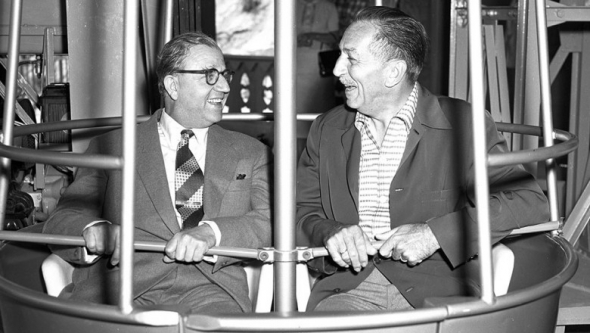
Just a few months after the opening of Disneyland – in fall 1955 – Walt Disney learned that the Von Roll Company, a Swiss industrial manufacturer of ski lifts, was testing a transportation system involving small gondolas moving along suspended cables.
According to the indispensible Disneyland: The Nickel Tour by Bruce Gordon and David Mumford: “Walt was so intrigued by the possibilities that he bought one before he even knew where it would go. In one interview, prior to the ride’s opening, he described the Skyway as ‘a transportation system of the future, for use in parking lots in huge shopping centers.’ By November 18 [1955], the Von Roll engineers were working with designer John Hench to finalize the attraction.”
Disneyland’s Skyway
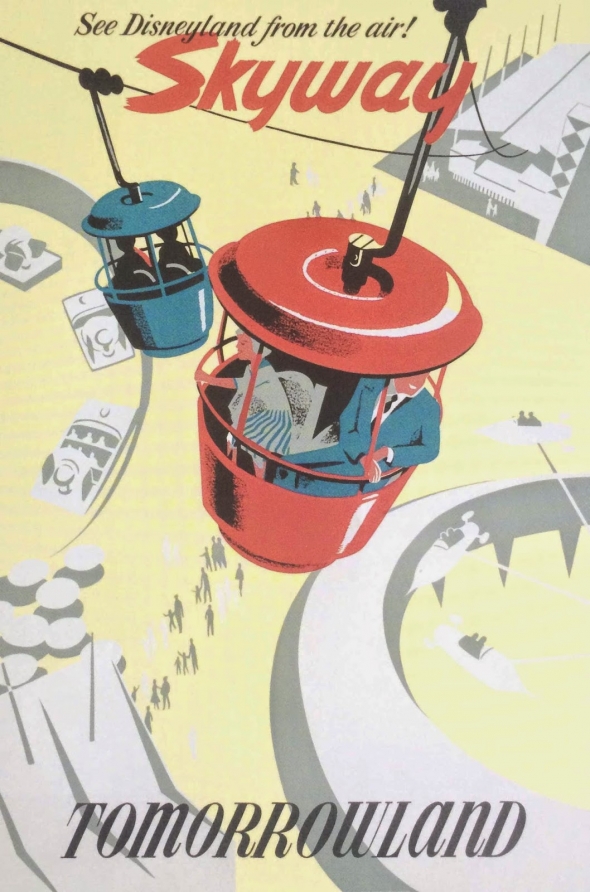
The Skyway to Tomorrowland and Skyway to Fantasyland (technically counted as two attractions, located in Fantasyland and Tomorrowland, respectively) opened before the park’s first birthday, on June 23, 1956. Though we consider it simple and practical by today’s standards, the Skyway rides were legitimately spectacular, representing the first-of-their-kind installation in the United States. Built entirely by Von Roll (technically, it’s a Von Roll 101 model aerial ropeway), the Skyway was made in part from used equipment left over from an installation at the 1955 Rotterdam Fair and German Federal Garden Show.
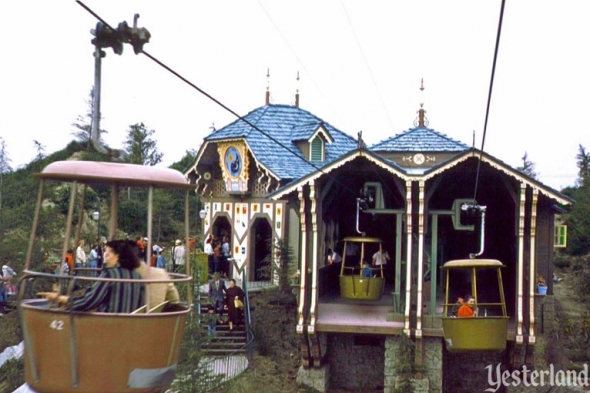
In true Disney fashion, the Skyway was neatly dressed. Fantasyland’s station (housing the ride’s spectacularly powerful machinery to keep the cable circulating) was designed to resemble a Swiss-style chalet in an alpine garden, set on a forested hill in Fantasyland. White-and-red aeronautical towers lead to Tomorrowland’s industrial, modern “sky station” (where the 35,000 pound counterweight kept the cable tight).
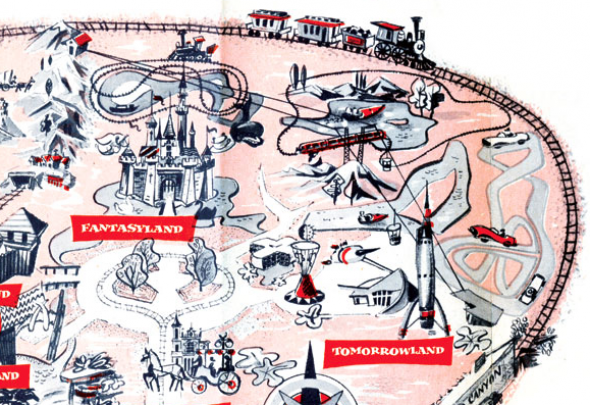
Along the 1,250 foot, 3½ minute journey between Fantasyland and Tomorrowland, the Skyway would skid over four support towers, with the 60’ foot tall apex support being at least partially concealed by “Holiday Hill” (truly just a mound of earth excavated to form Sleeping Beauty Castle’s moat, landscaped to create an appealing picnic hill separating Fantasyland and Tomorrowland).
A mild sightseeing tour (or a terrifying thrill ride depending on your comfort with heights), the Skyway was an instant hit and required the most expensive and limited ride ticket (a D-Ticket) to experience in 1956.
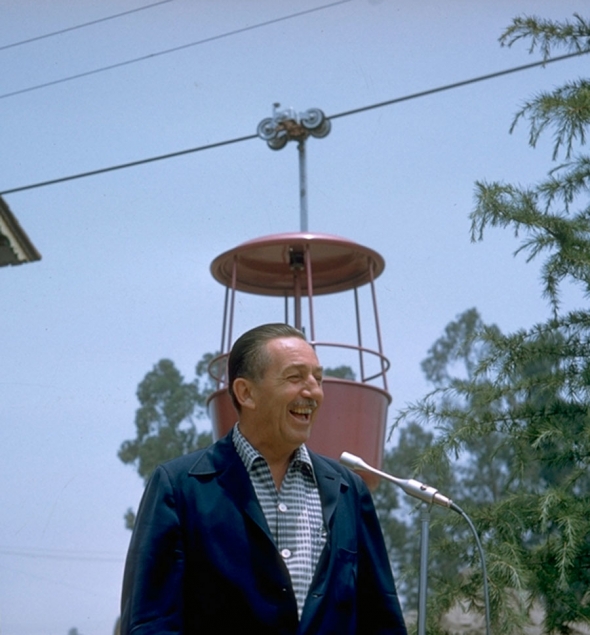
At that time, the Skyway featured 44 metal gondolas. Believe it or not, each had only two seats – literally patio chairs bolted to the floor – with a metal pole directly through the center of each gondola.
Moving on
The Skyway wouldn’t be the last prototype transportation system to be showcased at Disneyland as an attraction.
From his first happenstance glimpse of an Alweg monorail on a European road trip with his wife, Walt became fascinated with the sleek, aerial transportation system. In 1959, Walt oversaw the largest expansion in the young park’s history – so grand, it was televised as a “re-opening” of Disneyland! The Disneyland-Alweg Monorail was the first ever E-Ticket attraction, co-debuting alongside two other brand new Tomorrowland headliners…
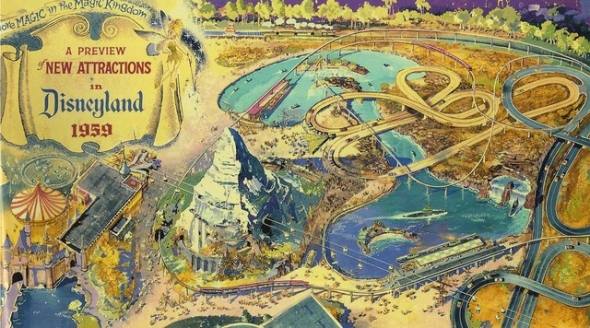
It just so happened that another E-Ticket opening the same day was set to be built directly in the path of the Skyway, replacing “Holiday Hill.” Brilliantly, the Skyway was closed late in 1957 as its tallest support tower was demolished and literally replaced by Disney’s first “mountain” – the Matterhorn Bobsleds.
The Matterhorn structure itself housed a guide tower along the Skyway’s route, so when the ride re-opened alongside the Tomorrowland expansion in 1959, guests got an inside look at what the guide map called “Glacier Grotto.” (In reality, the Matterhorn was simply empty, revealing its cavernous, hollow, structural-support interior until true glacial caverns were added in 1978. That’s also when Skyway riders would get a fleeting glimpse of the dreaded Abominable Snowman deep in the mountain…)
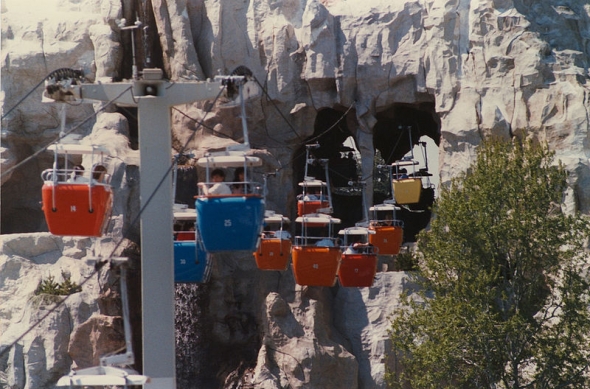
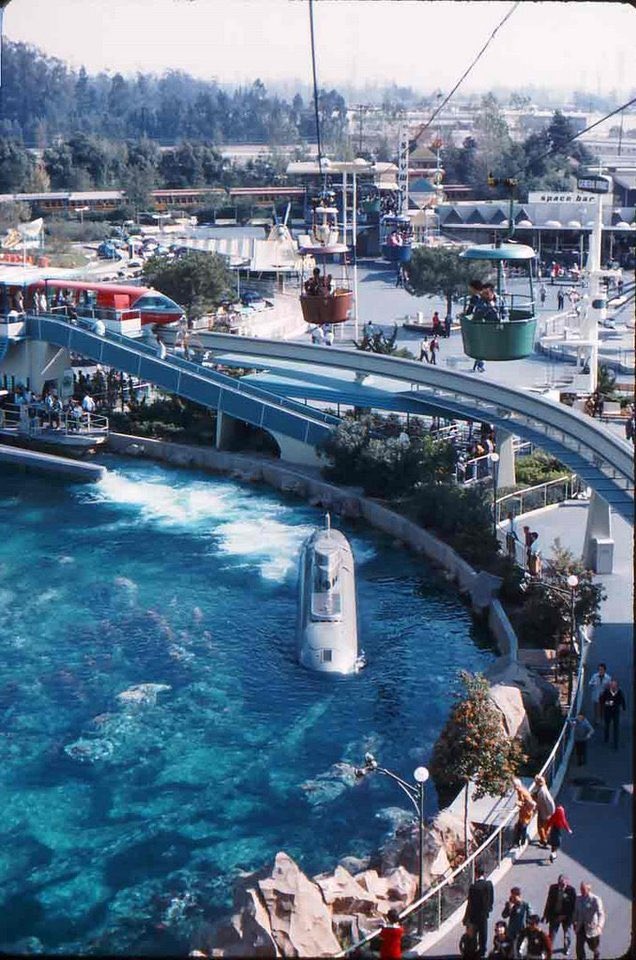
In 1965, the Skyway’s circular, 2-person buckets were finally replaced with a more familiar design. Disney Legend Bob Gurr was tasked with refining the vehicle (his specialty) to double each unit’s capacity. However, the existing ride system meant his vehicles could be only a few pounds heavier than the original model…
His ABS plastic models with a steel frame doubled each bucket’s capacity to four (two facing forward and two facing backward), removed the center post, and created the iconic and remembered rectangular buckets that graced the skies over Disneyland (and soon, Magic Kingdom) for thirty years.
You can take a relaxing trip on Disneyland’s lost Skyway through the Matterhorn as it was in the 1990s here:
But Walt wasn’t done with Tomorrowland, or with his ever-growing pursuit to find new ways to move people. And keeping with the theme of Walt’s forays into transportation solutions for tomorrow, another revolutionary prototype system – fellow Lost Legend: The Peoplemover – opened alongside Walt’s New Tomorrowland in 1967.
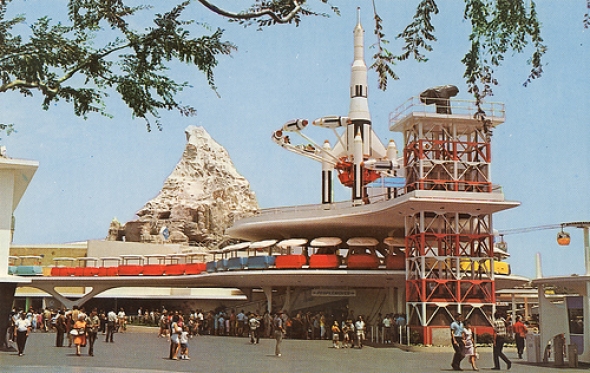
An icon of the park, this high-capacity, continuously loading journey through Tomorrowland was a wonder, whisking guests along the upper story of Tomorrowland in a timeless, sightseeing tour of what the action-packed future could hold.
And it was just one piece of the 1967 New Tomorrowland that’s so beloved and lamented by fans… Dubbed a “World on the Move,” guests in this kinetic Space Age paradise were truly surrounded by motion and by Walt’s sincere forecasts of how human ingenuity would see transportation and urban living evolve.
The pastel Peoplemover gliding overhead; the swirling Rocket Jets atop the land’s central pedestal; the revolving Modern Marvel: Carousel of Progress at the land’s center; the bubbling Submarine Voyage sailing beneath the iconic Monorail, with the cars of the Autopia sputtering along the landscape… and the Skyway, perpetually floating effortlessly over it all, rhythmically returning to Earth.
So for all the ways that Disney Parks fans celebrate this most definitive and beloved version of Tomorrowland in its truest and most genuine form, perhaps it’s easy to forget that in every image, postcard, and concept art for the land, the Skyway is seemingly always in view.
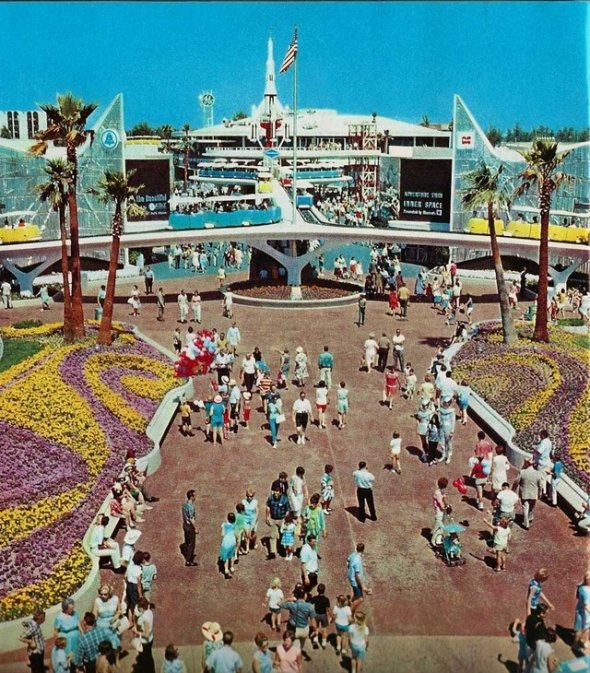
This New Tomorrowland – a pinnacle of Walt’s futurism – was indeed a spectacular showcase of what the future of transportation could hold. But by the end of the 1960s, designers were hard at work on what the Florida Project should look like… It was time to take the mere prototypes of Tomorrowland put them to use. Read on…



